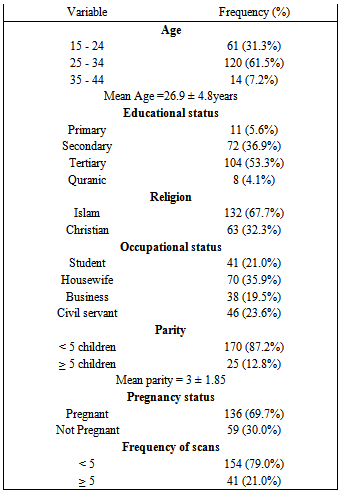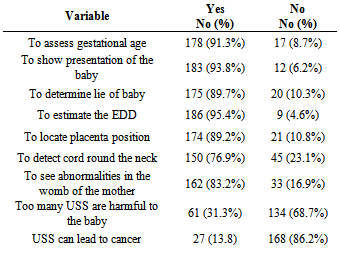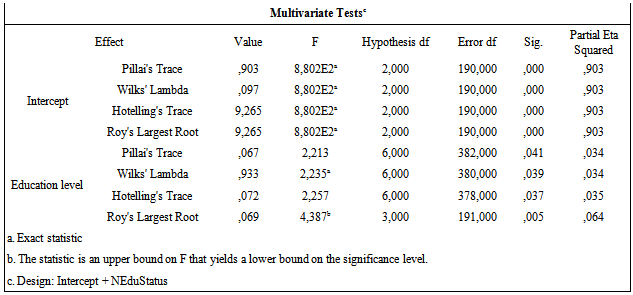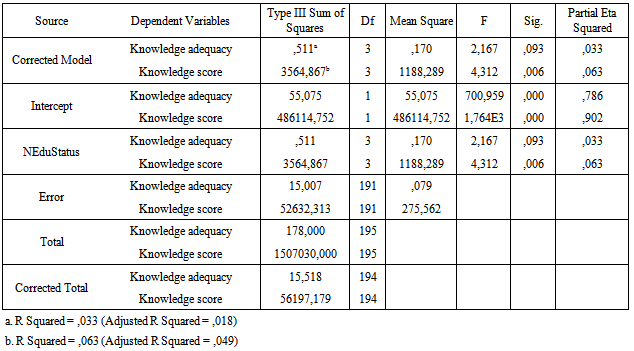| [1] | Vangeenderhuysen, C., Abdellahi, M.B., Isselmou, S.,2002, Training midwives in developing countries in obstetric ultrasonography: goals and application. J Gynecol Obstet Biol Reprod (Paris),31(1):100-6. |
| [2] | Kongnyuy, E.J., and Van den Broek, N., 2007, The use of ultrasonography in obstetrics in developing countries. Trop Doct. ,37(2):70-2. |
| [3] | Williams, C., Sandall, J., Lewando-Hundt, G., Heymann, B., Spencer, K., Grellier, R.,2005, Women as moral pioneers? Experiences of first trimester antenatal screening. Soc Sci Med.61(9):1983-92. |
| [4] | Gammeltoft ,T., Nguyen, H.T., 2007, The commodification of obstetric ultrasound scanning in Hanoi, Viet Nam. Reprod Health Matters;15(29):163-71. |
| [5] | Hofmeyr, G.J., 2009,Routine ultrasound examination in early pregnancy: is it worthwhile in low-income countries? Ultrasound Obstet Gynecol. 34:367–370. |
| [6] | Maru, D.S., Schwarz, R., Jason, A., Basu, S., Sharma, A., et al.2010, Turning a blind eye: the mobilization of radiology services in resource-poor regions. Global Health.6:18. |
| [7] | National Population Commission (NPC)[Nigeria] and ICF Macro. (2009). Nigeria Demographic and Health Survey 2008. Abuja, Nigeria/ Calverton, MD USA: National Population Commission and ICF Macro.http://pdf.usaid.gov/pdf_docs/PNADQ923.pdf |
| [8] | Health Reform Foundation of Nigeria, (2007). Primary Health Care in Nigeria: 30 years after Alma-Ata. The Nigerian Health review 2007; Health Reform Foundation of Nigeria, Mmm-nat Educational Window Consultant Ltd, Nigeria, Abuja. |
| [9] | Harris, R.D., Marks, W.M., 2009,Compact ultrasound for improving maternal and perinatal care in low-resource settings: review of the potential benefits, implementation challenges, and public health issues. J Ultrasound Med. 28:1067–1076. |
| [10] | Hofmeyr, G.J., Haws, R.A., Bergstrom, S., Lee, A.C., Okong, P., et al.2009, Obstetric care in low-resource settings: what, who, and how to overcome challenges to scale up? Int J Gynaecol Obstet 107 Suppl 1: S21–44;S44–25. |
| [11] | Royal College of Obstetricians and Gynaecologists. 1997,Ultrasound Screening for Fetal Abnormalities. Report of the RCOG Working Party. London: Royal College of Obstetricians and Gynaecologists. |
| [12] | Seffah, J.D., Adanu, R.M., 2009, Obstetric ultrasonography in low-income countries. Clin Obstet Gynecol. 52:250–255. |
| [13] | Yeboah, M.Y., Dassah, E.T., Odoi, A.T., Manu. A.A., 2010, The appropriateness of healthcare provider requests for obstetric and gynecologic ultrasound in a low-resource setting. Int J Gynaecol Obstet.111:271–273. |
| [14] | Bashour, H., Hafez, R., Abdulsalam, A., 2005,Syrian women's perceptions and experiences of ultrasound screening in pregnancy: implications for antenatal policy. Reprod Health Matters.13(25):147–154. |
| [15] | Georgsson, O., hman, S., Waldenstrom, U., 2008, Second trimester routine ultrasound screening: expectations and experiences in a nation wide Swedish sample. Ultrasound Obstet Gynecol.32(1):15–22. |
| [16] | Eurenius, K., Axelsson, O., Gallstedt-Fransson, I., Sjoden, P.O., 1997, Perception of information, expectations and experiences among women and their partners attending a second trimester routine ultrasound scan. Ultrasound Obstet Gynecol. 9(2):86–90. |
| [17] | Lalor, J.G., Devane, D., 2007,Information, knowledge and expectations of the routine ultrasound scan. Midwifery. 23(1):13–22. |
| [18] | Clement, S., Wilson, J., Sikorski, J., 1998, Women’s experiences of antenatal ultrasound scans. In: Clement S. Psychological Perspectives on Pregnancy and Childbirth. Edinburgh: Churchill Livingstone. p.7–24. |
| [19] | Glanz, K., Rimer, B. K., & Viswanath, K. (Eds). (2008). Health behavior and health education: Theory, research, and practice (4th ed.). San Francisco, CA: John Wiley & Sons. |
| [20] | Kirkwood, B., 1998, Essentials of Medical Statistics. Blackwell Scientific Publications Ltd Oxford. 2nd edition, P.197. |
| [21] | Ugwu, A.C; Osungbade, E.O., Erondu, F.O.,2009, Maternal Perspectives of prenatal sonogram in a North-Eastern population in Nigeria: Libyan Journal of Medicine . 4(4): 140-142. |
| [22] | Fisher, A.A., Laing, J.E.,Stoeckel, J.E.,and Townsend, J.W.,1998, Handbook for Family Planning Operations Research Design (2nd ed). Population Council, New York. Retrieved fromhttp://www.popcouncil.org/pdfs/frontiers/Manuals/ANE_ECP_Manual_2008.pdf. |
| [23] | Tabachnick ,B.G and Fidell, L.S., 2007, Using Multivariate statistics (5th ed).Boston:Pearson Education. |
| [24] | Whynes, D. K., 2002, Receipt of information and women’s attitudes towards ultrasound scanning during pregnancy. Ultrasound Obstet Gynecol.19: 7-12. |
| [25] | Enakpene, C.A., Morhason-Bello, I.O., Marinho, A.O., Adedokun, B.O., Kalejaiye, A.O., Sogo, K., et al, 2009, Clients' reasons for prenatal ultrasonography in Ibadan, South West of Nigeria. BMC Women's Health, 9:12. |
| [26] | Szklo, M., & Nieto, F. J. ,2014, Epidemiology: Beyond the basics (3rd ed.). Chapter 4, “Understanding a Lack of Validity: Bias”; Sudbury, MA: Jones and Bartlett. Tabachnick, B. G., & Fidell, L. S. (2007). Using Multivariate statistics (5th ed). Boston: Pearson Education. |
| [27] | WHO (2008). The report of WHO Commission on the Social Determinants of Health. Closing the gap in a generation: Health equity through action on the social determinants of health. Geneva, Switzerland: World Health Organization. Retrieved fromhttp://whqlibdoc.who.int/publications/2008/9789241563703_eng.pdf. |
| [28] | Firth E R , Mlay P , Walker R , Sill P R . Pregnant women's beliefs, expectations and experiences of antenatal ultrasound in Northern Tanzania . African Journal of Reproductive Health, 2011;15(2): 91-108. |
| [29] | Mubuuke, A.G., Kiguli-Malwadde, E., Businge, F., Byanyima, R., 2009,Current Knowledge, Attitudes and Practices of expectant women toward routine use of sonography at Naguru Health Centre, Uganda. Pan-African Medical Journal.3:18. |
| [30] | Eniyandunni, F., Soyebi, K., Irurhe, N., Olowoyeye, O., Adeyomoye, A., Ketiku, K., Arogundade, R., 2011, A Survey Of Psychological Reaction And Perception Of Pregnant Women, To Prenatal Ultrasonography In Lagos University Teaching Hospital, Idi-Araba, Lagos. The Internet Journal of Health.12(2). DOI: 10.5580/7bb. |
| [31] | Ekele, B.A., Maaji, S.M., Bello,S.O., Morhason- Bello, I.O.,2008, Profile of women seeking fetal gender at ultrasound in a Nigerian obstetric population: Ultrasound . 16(4): 199-202. |
| [32] | Adewuya, A.O., Ola, B.A., Aloba, O.O., Mapayi, B.M., 2006, Anxiety disorders among Nigerian women in late pregnancy: a controlled study. Arch Women Ment Health. 9:325-8. |
| [33] | Sayil , M., Gure, A., Ucanok, Z., 2006,First time mothers' anxiety and depressive symptoms across the transition to motherhood: associations with maternal and environmental characteristics. Women Health. 44:61–77. |
| [34] | Ugwu, A.C., Ahamefule, K., Egwu, O.A., Otu, E., Okonkwo, C.A., et al.2007, Patient satisfaction with obstetric ultrasonography. Radiol Technol.79:113–118. |
| [35] | Rijken, M.J., Lee, S.J., Boel, M.E., Papageorghiou, A.T., Visser, G.H., et al.2009, Obstetric ultrasound scanning by local health workers in a refugee camp on the Thai-Burmese border. Ultrasound Obstet Gynecol.34:395–403. |
| [36] | Wood, C., and Bean, F., 1997,Offspring gender and family size: Implications for a comparison of Mexican-Americans and Anglo-Americans. Journal of Marriage and the family.39:129-139. |
| [37] | Hank, K., and Kholer, H., 2000,Gender preferences for children in Europe:Emperical Results from 17 FFS Countries, 2000. Retrieved fromhttp/www.demographic=research.org/volumes/vol2/1. |
| [38] | Arnold, F. 1997, Gender preferences for children. Demographic and Health surveys comparative studies no.23. |

 Abstract
Abstract Reference
Reference Full-Text PDF
Full-Text PDF Full-text HTML
Full-text HTML




